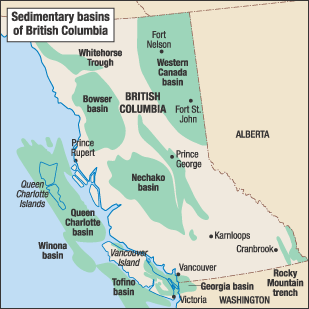Looking ahead
Jan. 2002 Vol. 223 No. 1 Looking Ahead UK could be substantial importer, yet 50% more production also possible. A report by Houston-based Simmons & Co. Internat
UK could be substantial importer, yet 50% more production also possible. A report by Houston-based Simmons & Co. International, an oil research firm, states that North Sea production peaked in 1999 at 2.7 million bopd. It also predicts that declining output of 6% in 2000 and 7% last year will continue. The area-fields’ average depletion rate is 11.4%. To offset this decline and keep production steady will require UK operators to add almost 300,000 bopd to current production levels. Simmons projects that this year will be the exception to the UK’s fairly constant production decline because an extra 150,000 bopd could come onstream from the Elgin-Franklin and Leadon fields. A joint, government-industry group study, carried out by Aberdeen University, reports that the North Sea is capable of adding more than 50% additional output to reserves with 6.3 billion boe that are economically extractable from these fields. The study further confirms an earlier report by Wood Mackenzie that estimates UK reserves in current producing fields at about 11 billion boe. Trinidad could become major oil province. The Anglo-Australian natural resources group, BHP-Billiton, said shallow-water exploration work showed Trinidad has the potential to become a major hydrocarbon-producing province. A second exploration well indicated a multi-hundred million-barrel find of high-quality oil in Block 2c, on which the group and its partners are working. The U.S. government claims the island’s proven oil reserves stand at around 700 million bbl. Thus, a find of this magnitude would be a considerable boost and could reverse a decline in oil production that now stands at about 130,000 bopd. BHP-Billiton said further appraisal drilling was necessary, but the firm intends to fast-track the development. British Columbia seeks offshore drilling. Despite opposition, British Columbia still hopes to develop energy reserves off its pristine Pacific Coast. Premier Gordon Campbell said the Canadian province is eager to overcome potential legal and political problems if a scientific report, due January 15, says the development can be done without excessive ecological risk. "If we can get through the first hurdle and say this is achievable in an environmentally sustainable way, I think (it will generate a lot of zeal) to make sure things move forward quickly." The Geological Survey of Canada estimates that the Queen Charlotte basin off the southern tip of the Alaska panhandle has reserves of 9.8 billion bbl of oil and 25.9 Tcfg. This makes the region one of Canada’s largest potential energy reserves. Drilling along the Pacific Coast has been barred since 1972. An effort was made to remove the blocks in 1989, but it was overshadowed by the Exxon Valdez oil tanker wreck in Alaska. Campbell said, "We have to not lock ourselves in the past and recognize (there are) new technologies and new approaches (to offshore drilling)."
BLM prepares new plan for northwest corner of NPRA. The Bureau of Land Management will prepare a land use plan for about 10 million acres in the northwest corner of the National Petroleum Reserve-Alaska. The area is immediately west of lands covered in a plan released in 1998. A draft environmental impact statement is scheduled for release in November 2002. Companies are requested to nominate and rank by priority regions within the plan area that should be considered for oil and gas leasing. Individual nominations will be kept confidential. Nigeria signs 30-year PSC. The Nigerian federal government took a major step toward petroleum development in the country by signing a 30-year, deep-offshore production sharing contract (PSC) with three firms. Dr. Rilwanu Lukman, the Nigerian president’s special advisor on petroleum and energy said the companies will operate OPL 205, with ChevronTexaco holding 50% working interest, Shell Petroleum 35% and Petrobrás the remaining 15%. The two-part contract allows 10 years for prospecting (OPL) and 20 years for mining (OML). In a 1993 agreement, the government received 20% of expected profits while companies share 80%. After it was reviewed, the government now receives 70%, while companies share 30%. Kuwait hopes for Neutral Zone deal with AOC. Kuwait plans to end talks with Arabian Oil on the firm’s future in the Neutral Zone, after its 40-year concession in the area expires 2003. The government approved and has begun second-phase talks, based on non-binding principles agreed to in first-phase negotiations with the Japanese firm. Meanwhile, the country is establishing its own firm to take over as operator, once AOC pulls out in January 2003. AOC had hoped to renew its concession or acquiring a bigger stake in operations, but Kuwait says the existing deal could not be renewed, as the constitution bans production sharing and foreign ownership of natural resources, such as hydrocarbons. The new deal focuses on AOC providing technical assistance and soft loans for operations in the zone and a long-term, Kuwaiti oil supply deal. Malaysia to become net oil importer. After annual consumption exceeds output in 2008, Malaysia is expected to become a net importer of crude. Deputy Minister Andan Tengku Mansor said that at the beginning of 2001, the country’s net reserves stood at 3.4 billion bbl of oil. These reserves could last for another 16 years at the current 650,000-bopd production rate. However, Malaysia’s production rate is expected to decline progressively in line with the reduction in national reserves, he said. Reassuringly, substantial efforts via exploration are being made to raise oil reserve levels. |



